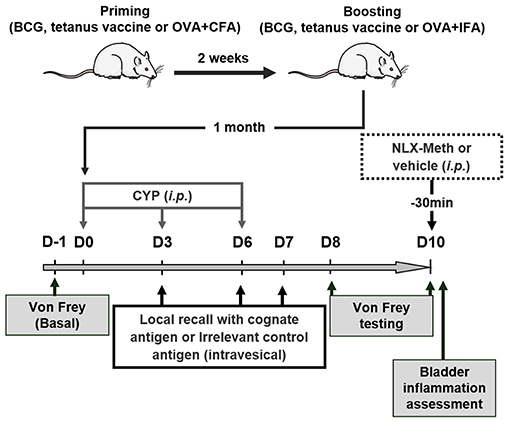Interstitial Cystitis, often abbreviated as IC, is a chronic condition that affects the bladder and causes significant discomfort and pain. It is also commonly referred to as Painful Bladder Syndrome. This condition can severely impact an individual’s quality of life due to its persistent symptoms and the challenges associated with diagnosis and treatment. In this article, we will explore the details of this condition, including its symptoms, potential causes, and available treatments.

Understanding Interstitial Cystitis
Interstitial Cystitis is a complex and poorly understood condition that primarily affects the bladder. Unlike other bladder-related issues, it is not caused by infection or inflammation from external factors. Instead, it involves a combination of symptoms that suggest the bladder lining may be damaged or overly sensitive. The condition predominantly affects women, though men can also develop it. Its onset can occur at any age, but it is most commonly diagnosed in individuals in their 30s and 40s.
The Role of the Bladder
The bladder is a muscular organ responsible for storing urine until it is expelled from the body. In healthy individuals, the bladder expands as it fills with urine and contracts during urination. For those with Interstitial Cystitis, however, the bladder becomes irritated and inflamed, leading to a range of uncomfortable symptoms. This irritation may result from defects in the protective lining of the bladder, which allows harmful substances in the urine to irritate the bladder wall.
Symptoms of Interstitial Cystitis
The symptoms of Interstitial Cystitis can vary significantly from person to person, making it challenging to diagnose. Some individuals experience mild discomfort, while others endure severe pain and disruption to their daily lives. Below are the most common symptoms associated with this condition:
Pain in the Pelvic Region
- Location of Pain: Individuals with Interstitial Cystitis often report pain in the lower abdomen, pelvic area, or between the vagina and anus in women, and between the scrotum and anus in men.
- Nature of Pain: The pain may be constant or intermittent and can range from mild discomfort to intense, debilitating pain.
Frequent Urination
- Increased Frequency: People with this condition may feel the urge to urinate more often than usual, sometimes needing to go as frequently as every 10 to 15 minutes.
- Nocturia: Nighttime urination is also common, disrupting sleep patterns and contributing to fatigue.
Urgency to Urinate
A sudden and overwhelming urge to urinate is another hallmark symptom. This urgency can occur even when the bladder is not full, causing anxiety and stress for the individual.
Pain During Sexual Activity
Both men and women with Interstitial Cystitis may experience pain during sexual intercourse. Women may feel discomfort in the pelvic region, while men may experience pain in the penis or scrotum.
Potential Causes of Interstitial Cystitis
Despite extensive research, the exact cause of Interstitial Cystitis remains unknown. However, several theories have been proposed to explain its development. These include:
Defective Bladder Lining
One leading theory suggests that the protective lining of the bladder, known as the glycosaminoglycan layer, may be damaged or missing in individuals with this condition. This defect allows toxic substances in the urine to irritate the bladder wall, leading to inflammation and pain.
Autoimmune Response
Some researchers believe that Interstitial Cystitis may be related to an autoimmune response, where the body’s immune system mistakenly attacks the bladder tissue. This could explain the chronic inflammation observed in affected individuals.
Infections or Allergies
Although Interstitial Cystitis is not caused by bacterial infections, some experts speculate that previous infections or allergic reactions may trigger the condition in susceptible individuals.
Nerve Dysfunction
Another possible cause involves dysfunction in the nerves that control bladder function. Abnormal nerve signals may lead to heightened sensitivity and pain in the bladder.
Treatment Options for Interstitial Cystitis
While there is no cure for Interstitial Cystitis, various treatment options are available to manage symptoms and improve quality of life. Treatment plans are typically tailored to the individual’s specific symptoms and severity of the condition. Below are some of the most common approaches:
Lifestyle Modifications
- Dietary Changes: Certain foods and beverages, such as caffeine, alcohol, spicy foods, and acidic fruits, can irritate the bladder. Avoiding these triggers may help reduce symptoms.
- Stress Management: Stress can exacerbate symptoms, so techniques like meditation, yoga, and deep breathing exercises may be beneficial.
- Bladder Training: Techniques to gradually increase the time between bathroom visits can help reduce urinary frequency and urgency.
Medications
- Oral Medications: Drugs such as pentosan polysulfate sodium can help repair the bladder lining, while antihistamines may reduce urinary urgency and frequency.
- Bladder Instillations: A solution containing medications like dimethyl sulfoxide is inserted directly into the bladder to reduce inflammation and alleviate pain.
Physical Therapy
Physical therapy focused on the pelvic floor muscles can help relieve pain and improve bladder function. Techniques such as manual therapy, stretching, and biofeedback may be used.
Neuromodulation
This treatment involves using electrical stimulation to regulate nerve activity in the bladder. Sacral neuromodulation and percutaneous tibial nerve stimulation are two common methods used to treat symptoms.
Surgery
Surgical interventions are typically reserved for severe cases that do not respond to other treatments. Procedures may include bladder augmentation, where the bladder is enlarged to hold more urine, or in extreme cases, removal of the bladder.
Living with Interstitial Cystitis
Managing Interstitial Cystitis requires a comprehensive approach that addresses both physical and emotional aspects of the condition. Support groups, counseling, and education about the condition can empower individuals to take an active role in their care. By working closely with healthcare providers, patients can develop a personalized treatment plan that minimizes symptoms and enhances their overall well-being.





